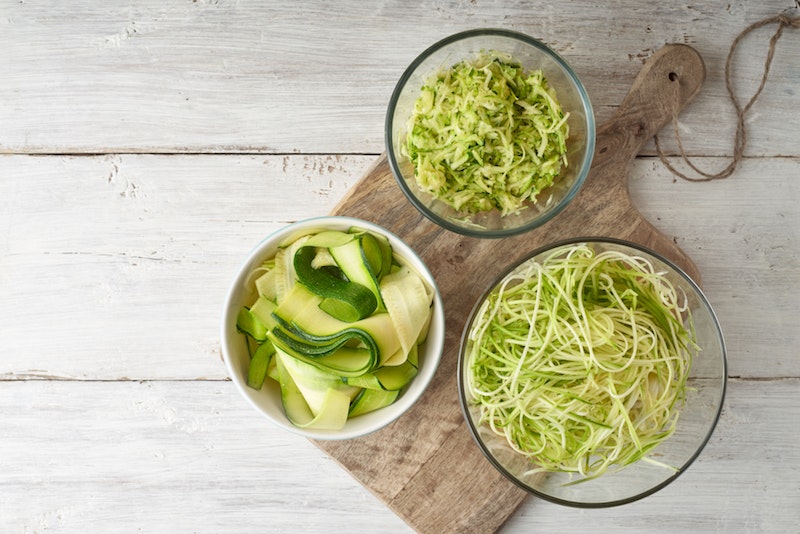Pop quiz: How many vegetables do you eat in a day? If you’re well below the two to three cups that doctors recommend, well, you’re in a very crowded club. A 2017 study by the Centers for Disease Control and Prevention found that nine out of 10 American adults are missing the mark, when it comes to eating their veggies.
That’s an especially hard stat to swallow when you consider that “vegetables are the most nutrition-packed food group,” said Dawn Jackson Blatner, RDN, a registered dietician in Chicago and nutrition consultant for the Chicago Cubs. “They have fiber, vitamins, minerals, and phytochemical plant compounds that can protect us against all kinds of diseases, including heart disease, diabetes and cancer.”
And you don’t have to overhaul your diet to get some of those benefits. Current evidence suggests we should reduce processed meat and red meat and cut down on added sugar, while meeting the daily fruit and vegetable targets for optimal health. But you may start to see real benefits with even modest changes in the right direction.
When researchers at Harvard University tracked dietary changes of nearly 74,000 people over more than a decade, they found that those who made even moderate improvements to their eating habits had lower risk of death from cardiovascular disease.
Does eating salad feels like a chore? Chomping on carrot sticks feel like a snore? Instead, try adding vegetables to dishes you already eat regularly, suggests Wendy Bazilian, PH, RD, a San Diego-based nutritionist and author of The Superfood Rx Diet. “This approach is kind of like playing a game: finding new ways to put together a dish so you can have a delicious meal — and well-lived life.” And as you eat more vegetables in familiar dishes, you may grow to love their tastes and textures — and eat them even more, she says.
Be a Sneak! Think your fave foods can’t be veggified? Try this:
You crave: fried rice
Reach for: cauliflower
Any trip through the grocery store will confirm that, when it comes to subbing in veggies, cauliflower is king. The versatile veg is easy to mash, roast and — yes — even rice. After washing and drying the head of cauliflower, simply chop it up either by hand or pulse in a food processor until it resembles rice, says Blatner. Every serving of this cruciferous vegetable packs almost half of your daily value of Vitamin C, as well as a healthy dose of fiber and protein.
Recipe inspiration: Fried cauliflower rice with carrots, cashews and corn or rainbow cauliflower rice bowl recipe
You crave: burgers
Reach for: mushrooms
You’ve seen mushroom burgers on plenty of menus, but did you know that you could put diced mushrooms directly into the meat patty? “Even the heartiest meat lovers rarely notice the difference,” says Bazilian, because the mushrooms add both moisture and umami. For most recipes, you can swap about one-third of the meat for diced mushrooms without having to make any major changes, Bazilian says. And that sneak will lower the burger’s saturated fat and calories, while upping its fiber.
Recipe inspiration: Beef and mushroom burgers
You crave: pasta
Reach for: zucchini
Zoodles are all the rage these days — with reason, says Blatner. Spiralized zucchini has a spaghetti-like quality that’s versatile enough for most pasta dishes. Yet it’s less calorically dense than traditional pasta and won’t give you the usual blood sugar spike, says Bazilian. It also boasts a good amount of potassium, which can help control blood pressure and may lessen your risk of stroke. You can find zoodles in the freezer aisle at the grocery store or, to make the shape at home, use a mandolin or spiral vegetable slicer to cut the squash into ribbon-like strips.
Recipe inspiration: Asian sesame zucchini noodles or zoodles and turkey meatballs
You crave: mac and cheese
Reach for: butternut squash
This comfort dish usually gets its richness from a double whammy of cheese and butter. But subbing in some pureed butternut squash can add a similar silky creaminess — with far fewer calories and less saturated fat, says Blatner. Butternut squash is also high in fiber and potassium, and it lends a subtle sweetness to the dish. “It’s really phenomenal,” she says. Subbing in some pasta made from chickpea, lentils, or black beans can add some fiber and protein.
Recipe inspiration: Mac and cheese with butternut squash or Vegan butternut macaroni and “cheese”





